Valley of the Kings, Tombs of Rameses V/VI, Seti I and Tutankhamen, Egypt
This is my second visit to the Valley of the Kings to see tombs that require an extra paid ticket. 838
Valley of the Kings: The New Valley Governorate 1413101, Egypt
Date Picture Taken: February, 2024
In the Valley of the Kings, there are many tombs, but only a subset of them are open to the public. The general ticket, which costs around 600 EGP ($20), allows visitors to explore three tombs without any additional fee. However, there are another three tombs that require an extra ticket, which means additional cost.
During my first visit, I had only one hour with my tour guide, so I visited only three tombs that did not require an extra ticket. But on this second visit, I explored six tombs, including three that the general ticket allowed and three extra-paid tombs.
I woke up early to beat the crowd, and when I reached the West Bank, many hot balloons were in the air.

I arrived at the valley at 7:00 am, and it was a lot fewer people.
During my first visit to the Valley of the Kings, I explored it as part of a day tour that covered both the West Bank and East Bank. However, this time around, I wanted to spend an entire day exploring the West Bank on my own. So, I hired a driver through my hotel for the Valley of the Kings, the Medinet Habu Temple, and the Valley of the Queens for approximately seven hours without a guide.

In this blog, I show three extra paid tombs.

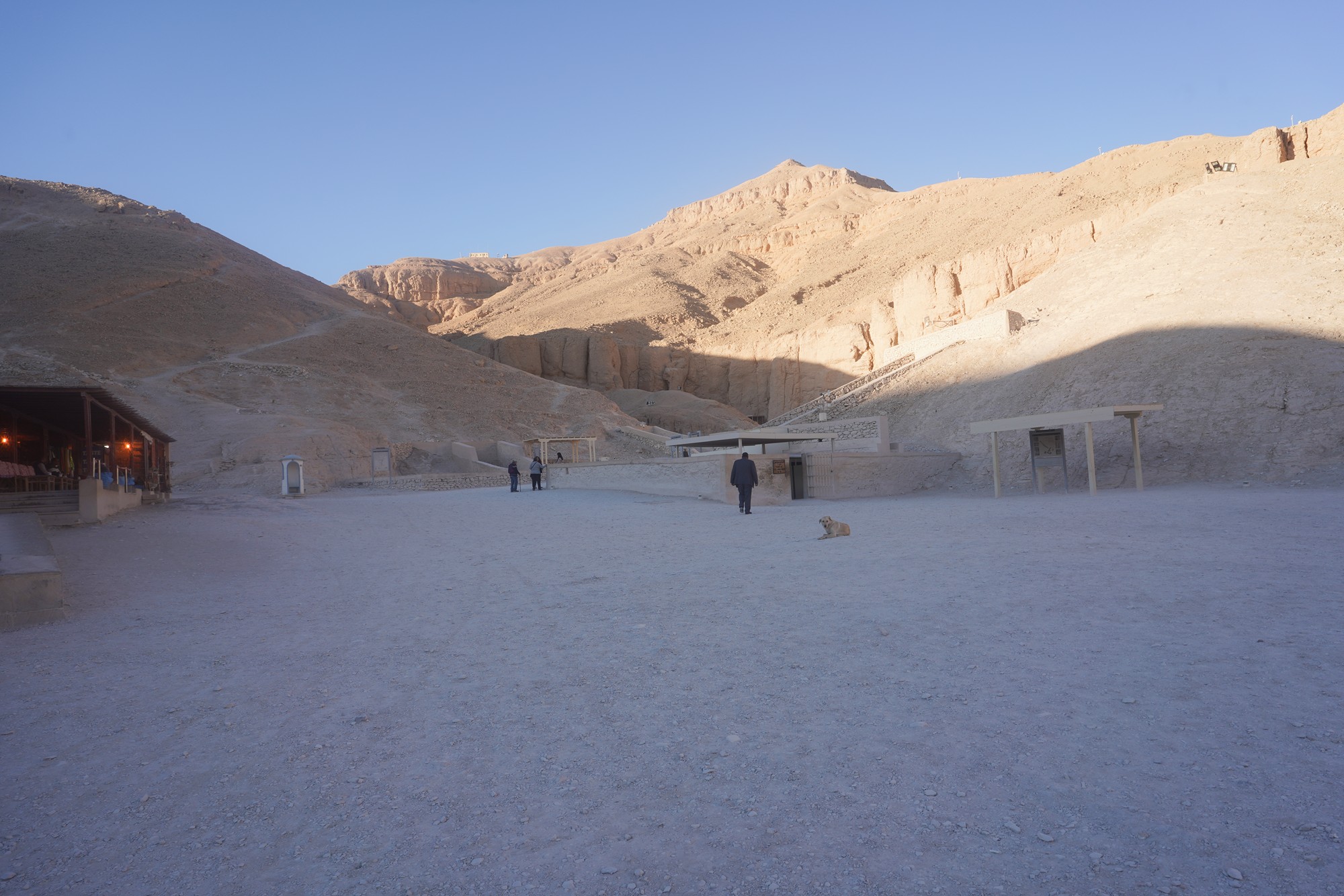



The map of the tombs in the valley.
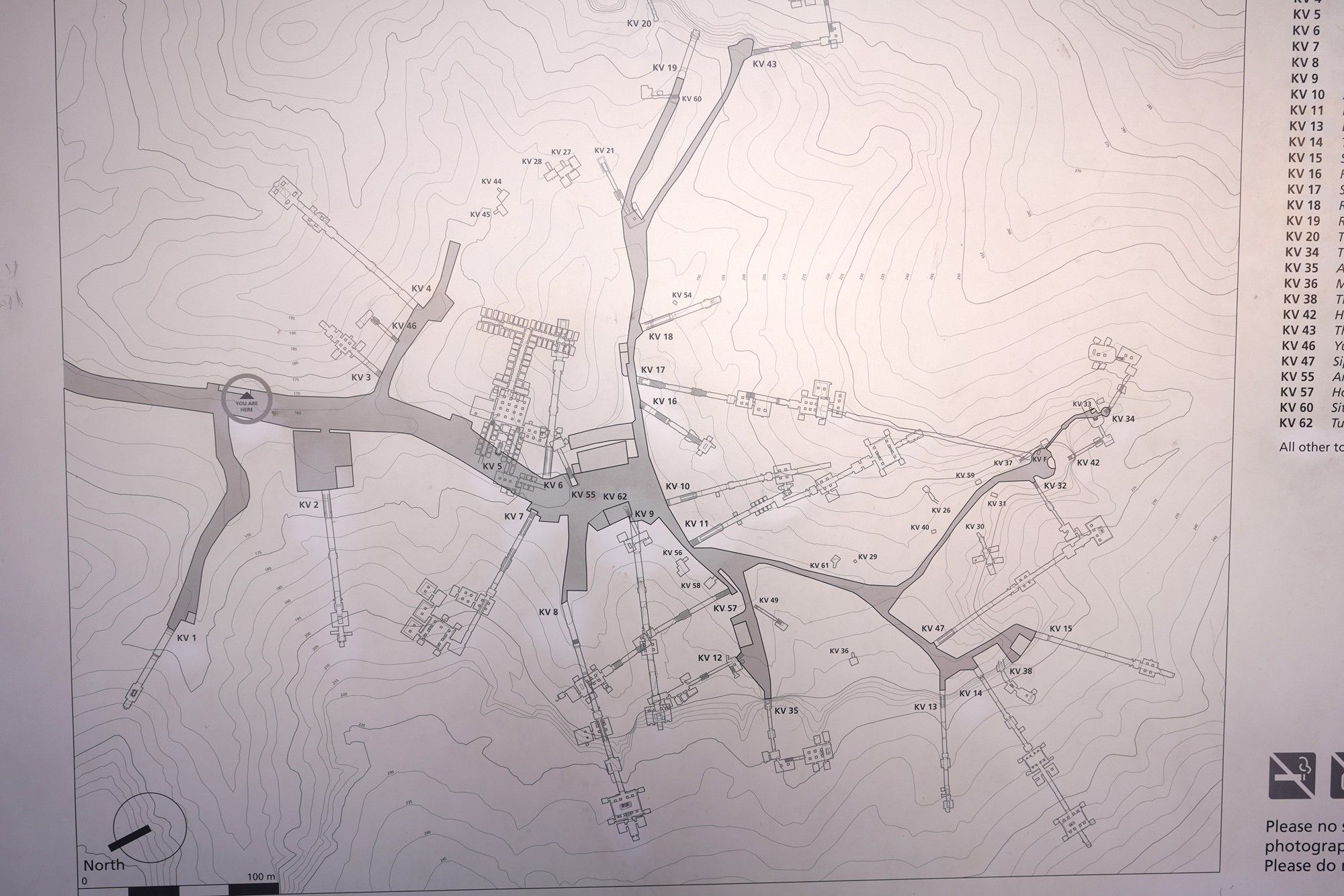
Some tombs are crossed on other tombs, and that means the tomb is either above or below the other tombs.

This tomb is for Sety I, and this is the most expensive tomb in the valley. It costs me about $60 dollars. Why this tomb cost me so much, I do not know.

Seti I, a formidable pharaoh of Egypt’s 19th Dynasty, distinguished himself through successful military campaigns in Canaan and Syria, securing Egypt’s borders. Known for prolific building, he left lasting legacies with structures like the Mortuary Temple at Abydos and the initiation of the Great Hypostyle Hall in Karnak. Emphasizing traditional religious beliefs, Seti I strengthened key cults. As the son of Ramesses I and father to Ramesses II, he played a crucial role in Egypt’s royal lineage. His tomb in the Valley of the Kings (KV17) stands as a testament to the grandeur of his reign.





Seti I’s tomb, designated KV17 in the Valley of the Kings, is one of the most impressive and elaborately decorated tombs from ancient Egypt. This burial site reflects the grandeur and wealth of the pharaoh’s reign. The tomb’s intricate wall reliefs depict scenes from Seti I’s life, religious rituals, and mythological themes, providing valuable insights into ancient Egyptian beliefs. Despite being looted in antiquity, the tomb still contained a wealth of treasures when it was discovered in the 19th century. Seti I’s burial in the Valley of the Kings underscores the significance of this royal necropolis during the New Kingdom period and highlights the pharaoh’s enduring legacy in Egyptian history.

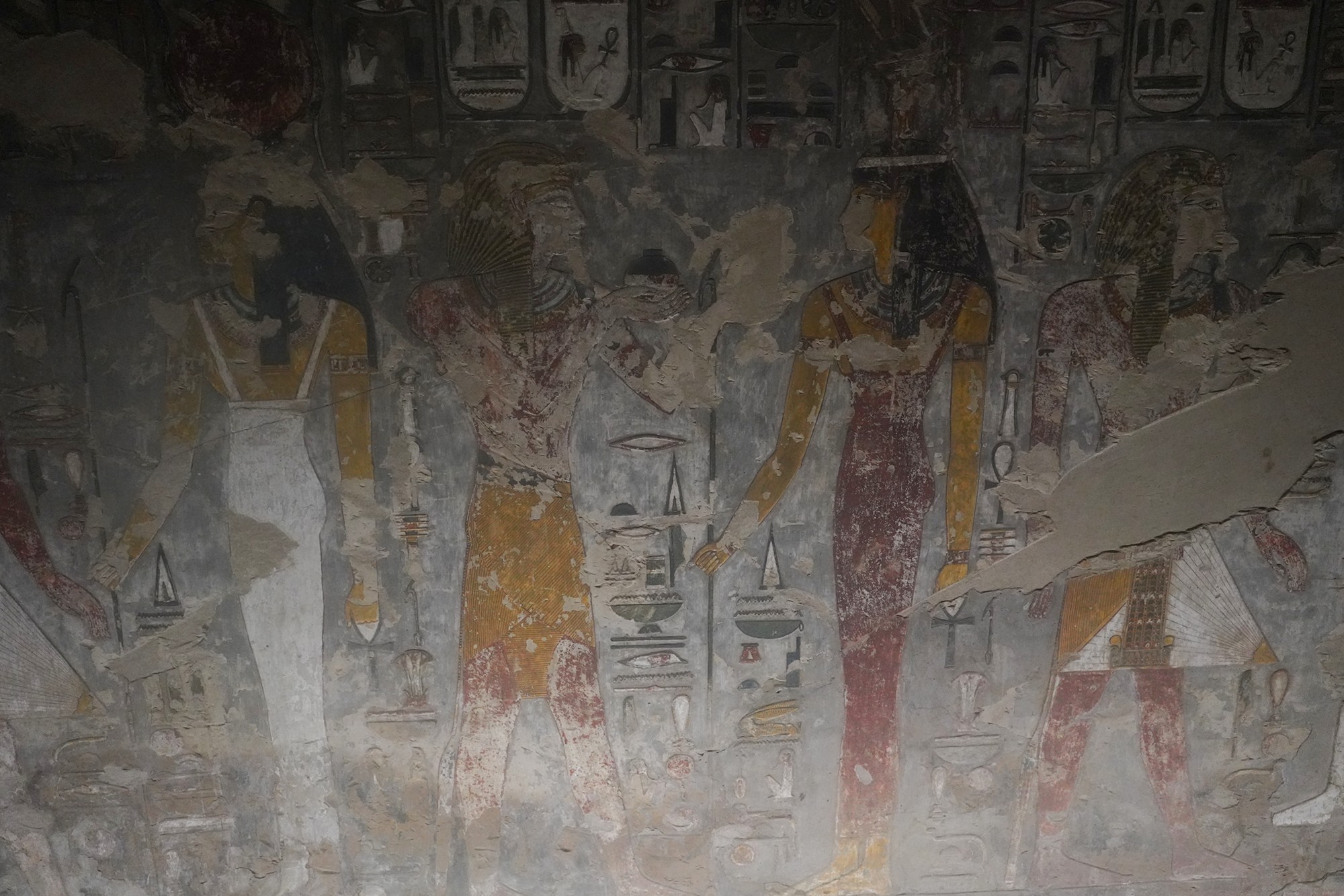

Panoramic view from left to right from the left front corner




There is a staircase located on the left front corner, which leads to the lower level.
Panoramic view from left to right from left front corner.



Looking at the rear side, I came in from the front center.

There is a small room in the corner.

Inside the small room
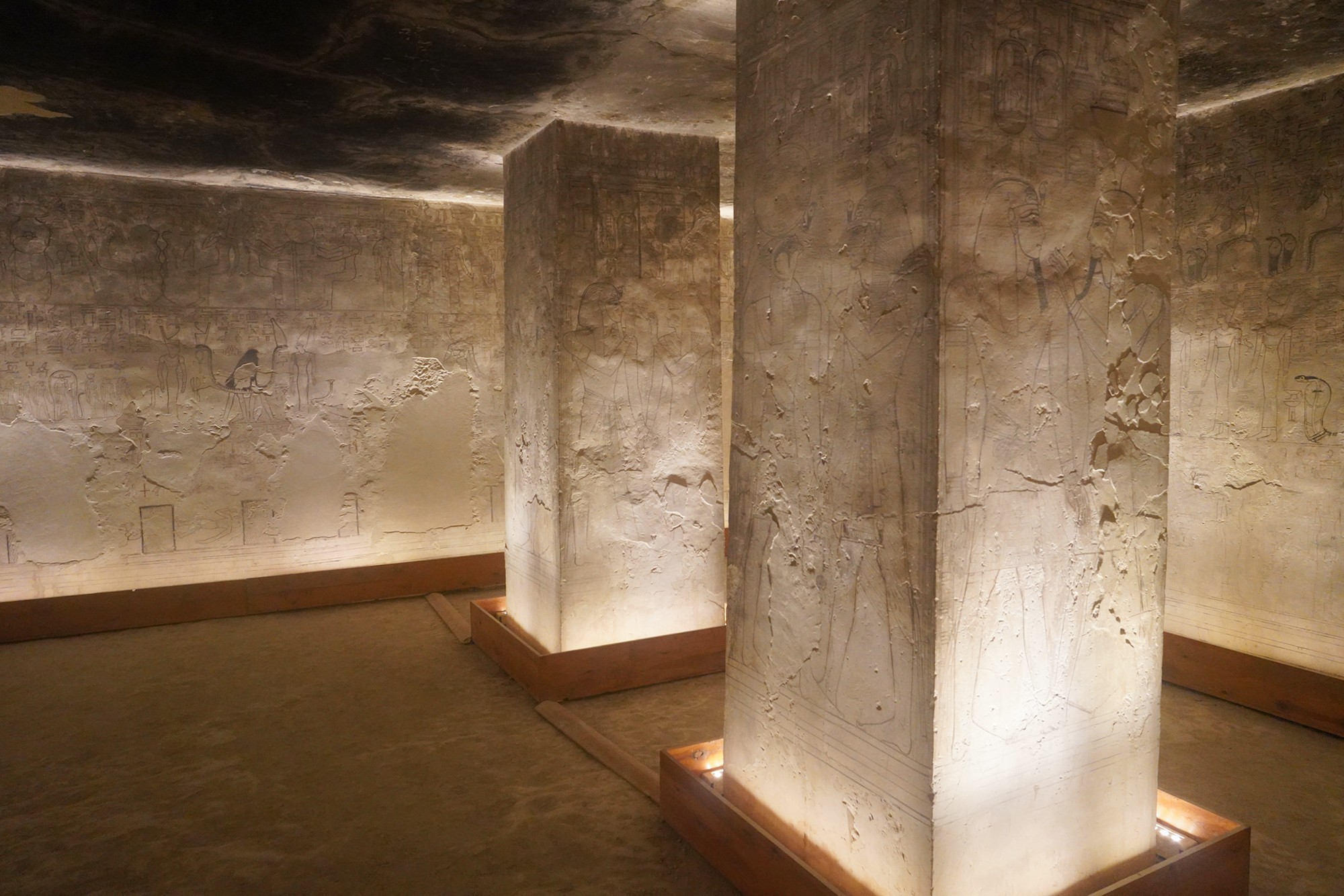


Back to the many-column room



To downstairs


A hallway to another room


The decoration on the wall in the hallway


Another room with many columns decorated with gold colors
Panoramic view of the room from the center rear (near the entrance to this room)


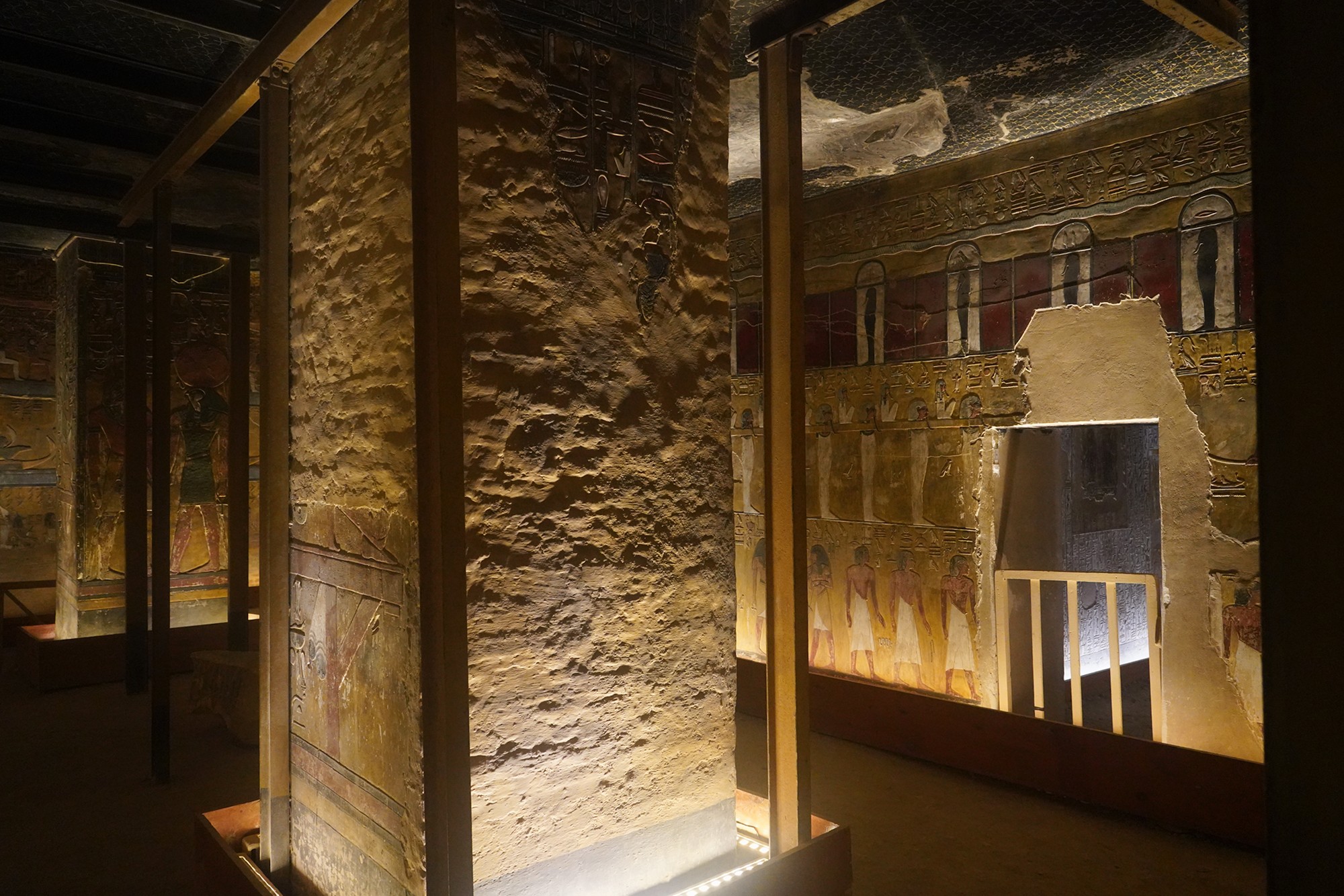
Panoramic view from top to bottom of the center front (tomb’s casket) of the room


This seems to be where the tomb casket was located

Turned around and looked back to where I came in to this room
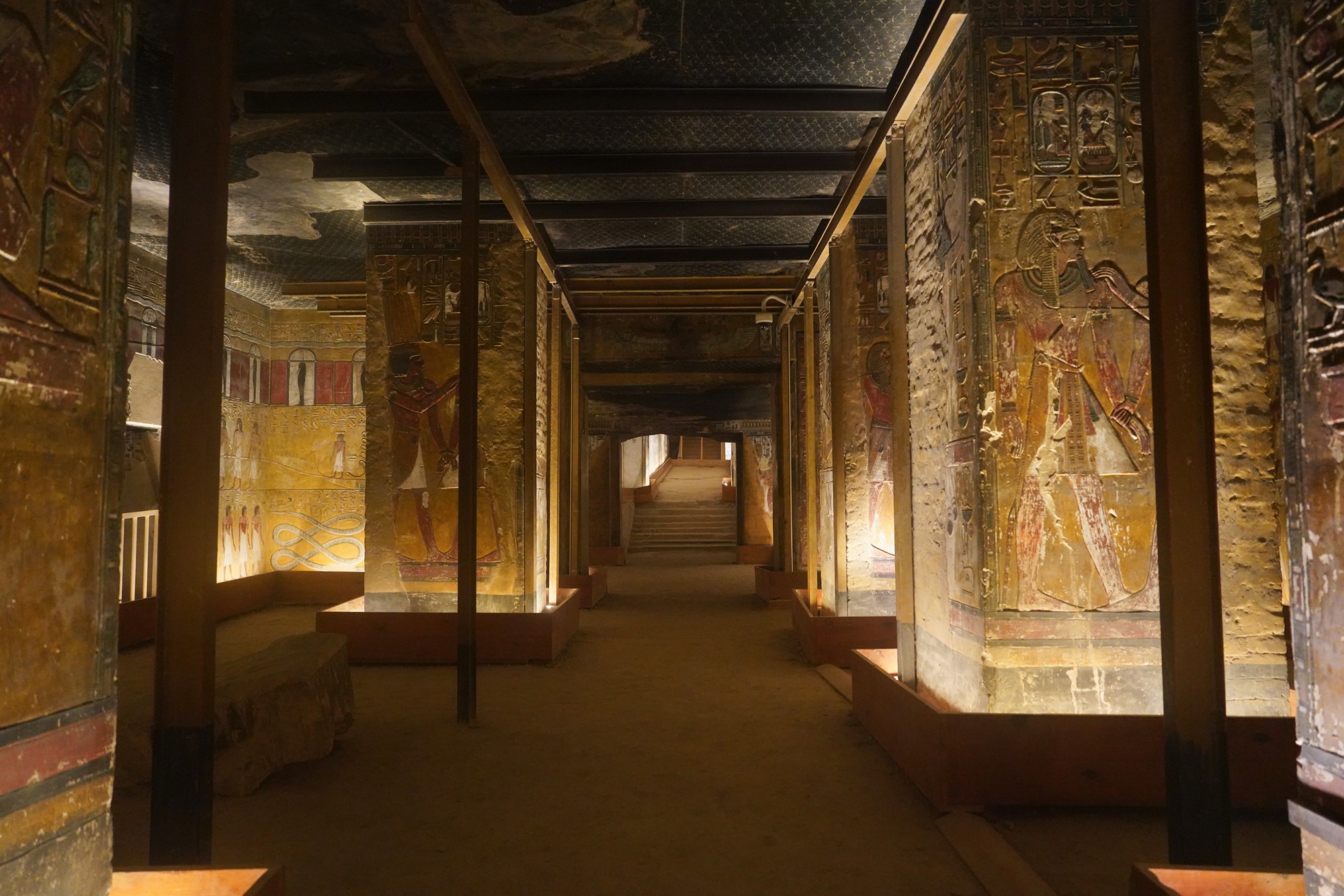
Then I turned around again and looked at the front (where the tomb is located). Panoramic view of the front side, left to right





The view of rear (near the entrance) right-hand side

The ceiling
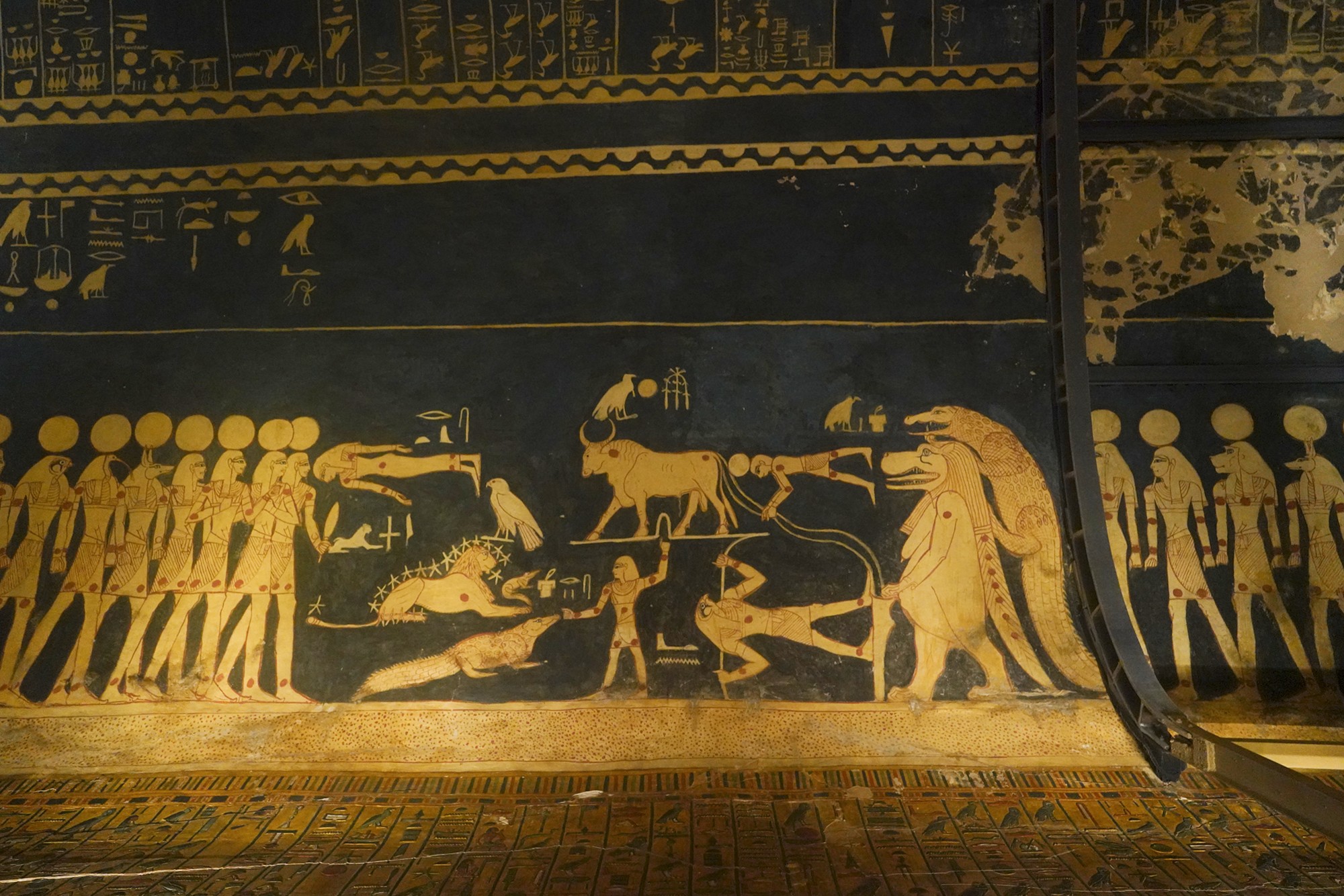
The left side wall of the front area

A room on the left side

The view of the left side room

Back to the main room

The right side also has a small room





Exiting the room


Back to the upper level room



Turned around and looked back

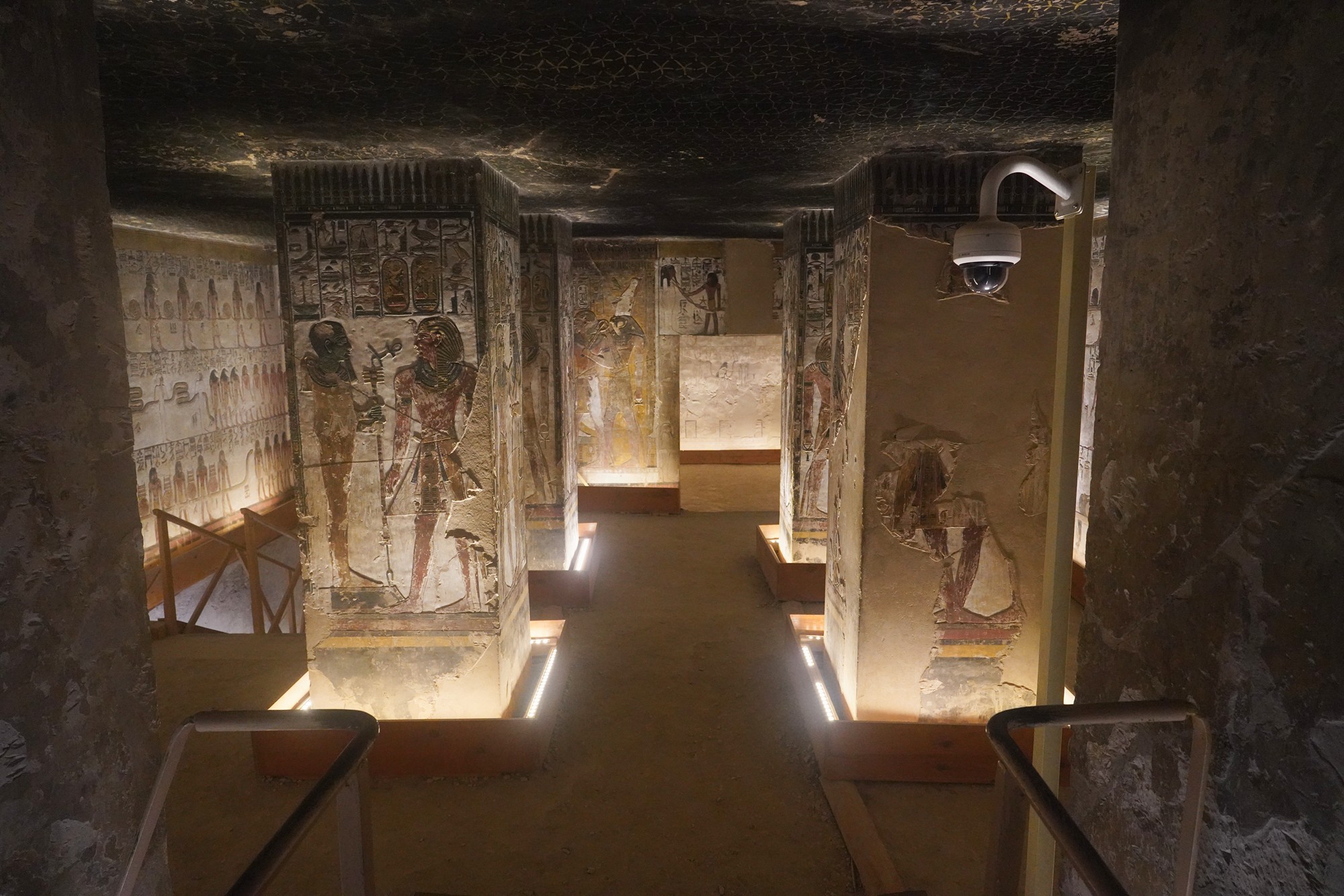





Exiting the tomb






Turned around and looked back



The next tomb that I visited was the tomb of Ramesses VI (KV9), which the ticket cost about six dollars.


Ramses VI, a pharaoh of the 20th Dynasty during the New Kingdom, ruled Egypt from approximately 1141 to 1133 BCE. His reign faced economic challenges and internal strife, leading to a decline in centralized authority. Ramses VI is associated with the Valley of the Kings tomb KV9, where his mummy was discovered. While not as prolific in monumental building as some predecessors, his era witnessed artistic and cultural developments. The complex family relations within the later Ramesside period contributed to the instability of the ruling elite. Ramses VI’s reign occurred during a challenging time, marking the end of the Ramesside era and contributing to the overall decline of the New Kingdom.


Ramses VI’s tomb, KV9, located in the Valley of the Kings, is notable for its elaborate decorations and the presence of his well-preserved mummy. The tomb consists of a series of corridors and chambers adorned with intricate wall reliefs depicting scenes from the pharaoh’s journey through the afterlife, religious rituals, and mythological themes. Despite facing some damage due to natural causes and ancient looting, the tomb still provides valuable insights into the religious beliefs and funerary practices of the time. Ramses VI’s burial site stands as a testament to the continued significance of the Valley of the Kings during the later Ramesside period, despite the challenges faced by the Egyptian empire during this era.



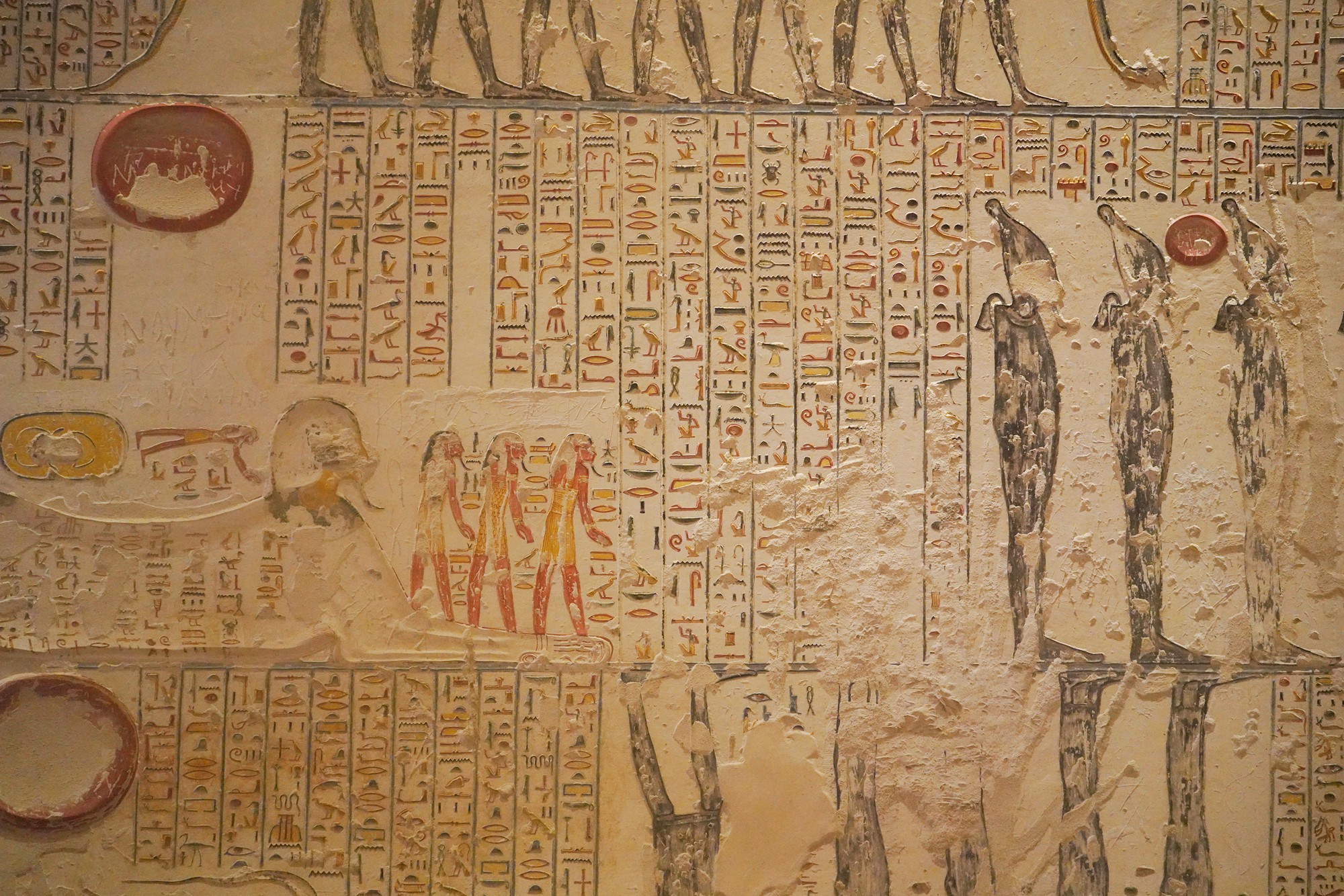








Turned around and looked back


The sarcophagus room

Panoramic view from left to right


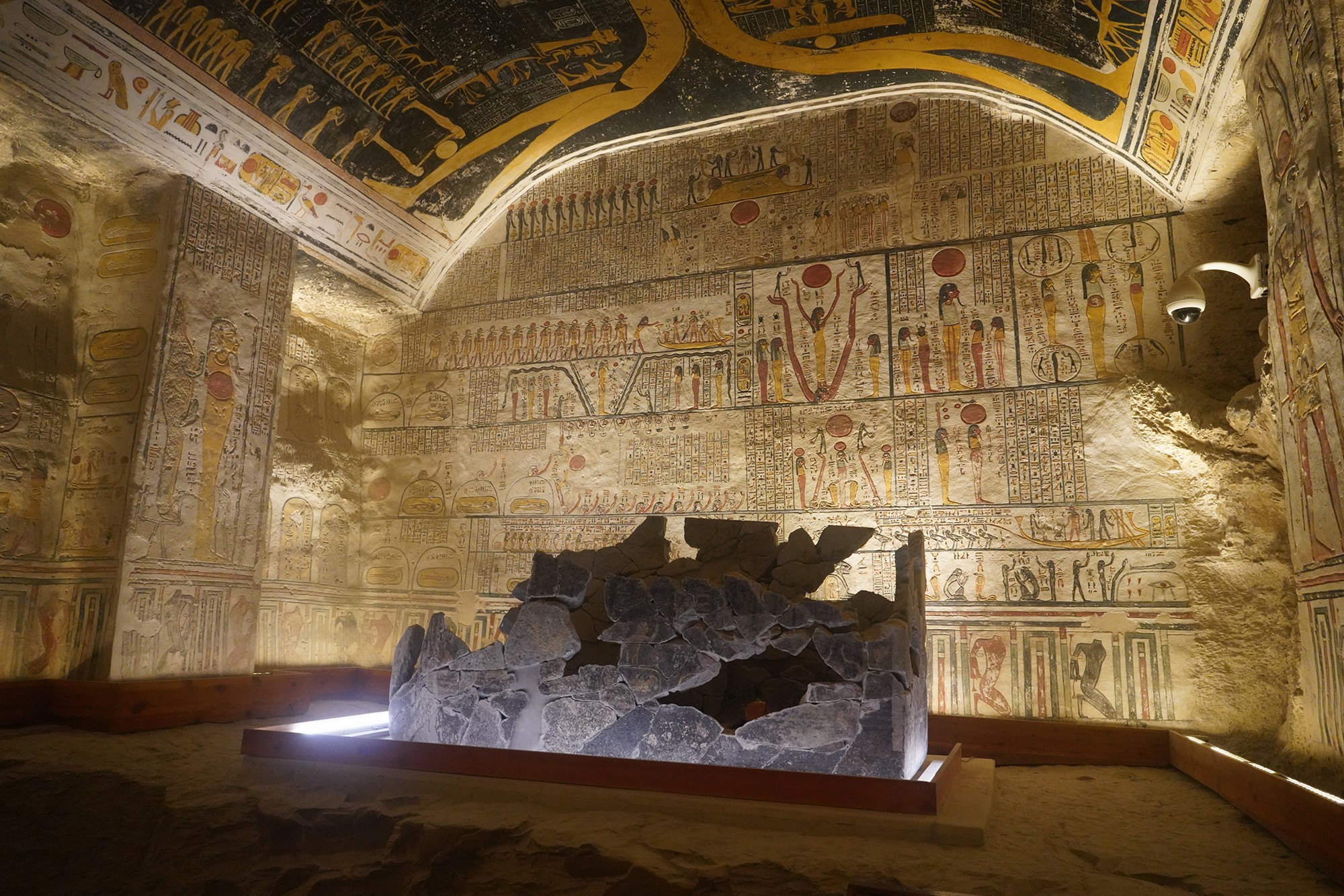
The ceiling


Looked back at the entrance


Exiting the tomb


Turned around and looked back





Turned around and looked back for the last time


The last extra-paid tomb that I visited was the Tomb of Tutankhamun, which cost 20 dollars. So, in total, it cost me 86 dollars to visit all three extra-paid tombs.

Tutankhamun, a pharaoh of the 18th Dynasty in ancient Egypt, ascended the throne at a young age and ruled briefly until his death around 1323 BCE. His reign is notable for the reversal of his predecessor Akhenaten’s religious reforms, reinstating traditional Egyptian deities. Tutankhamun’s tomb, discovered in 1922 by Howard Carter in the Valley of the Kings, contained a remarkably preserved burial mask and a wealth of treasures, making him one of the most famous pharaohs. The cause of his death remains uncertain, and theories include illness or an accident. Despite the historical mystery surrounding him, Tutankhamun’s legacy has captivated global interest and provided valuable insights into ancient Egyptian art, culture, and burial practices.

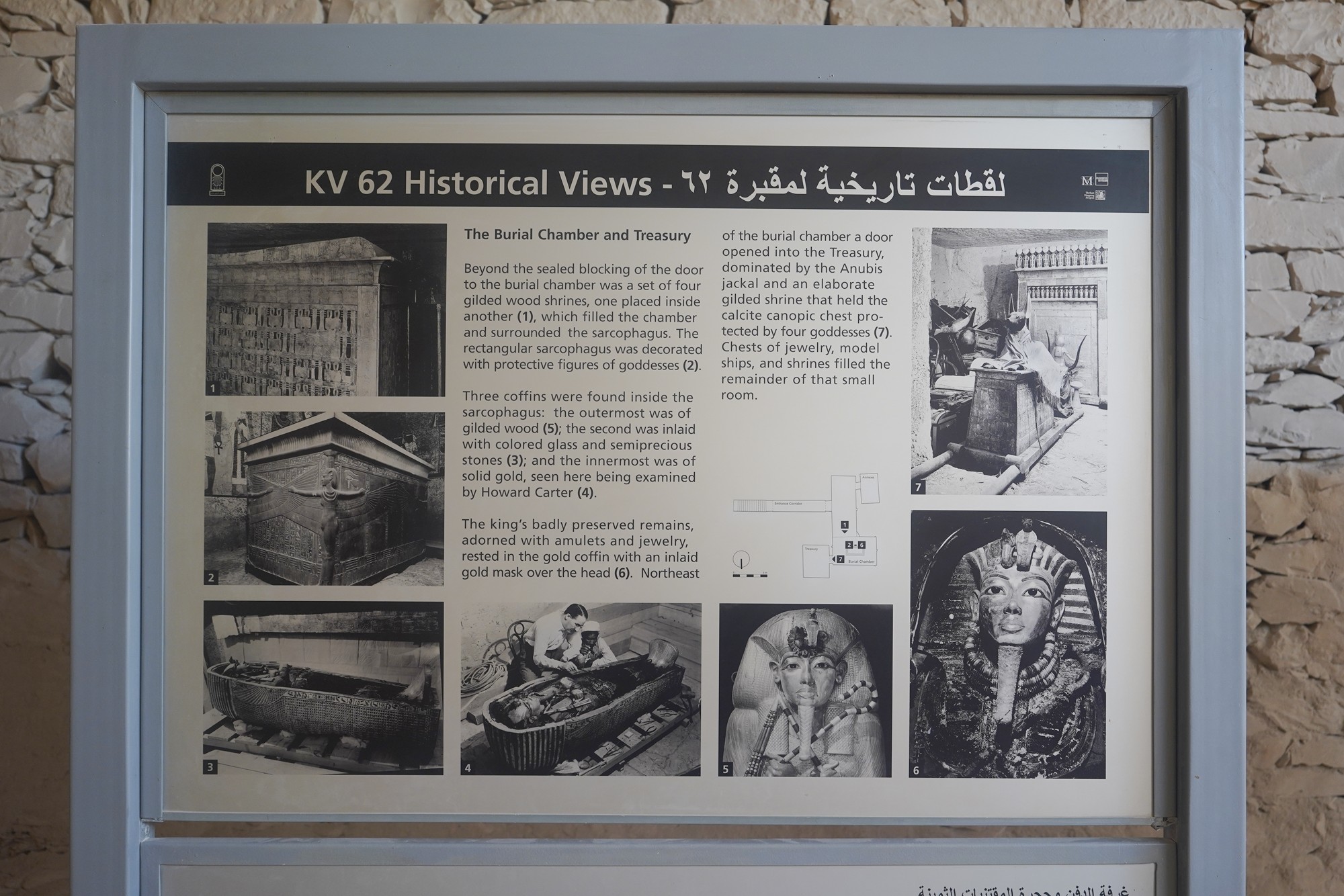

Tutankhamun’s tomb, designated KV62 in the Valley of the Kings, is one of the most famous archaeological discoveries in history. Discovered by Howard Carter in 1922, the tomb remained remarkably intact, providing an unparalleled glimpse into the funerary practices of ancient Egypt. The burial chamber contained an intricately adorned sarcophagus housing three coffins nested within one another. The innermost coffin held Tutankhamun’s mummy, adorned with a stunning gold burial mask. The tomb was filled with a vast array of treasures, including furniture, jewelry, chariots, and statuettes, reflecting the wealth and craftsmanship of the time. The discovery of Tutankhamun’s tomb significantly enriched our understanding of ancient Egyptian art, culture, and royal burial customs.
The findings in his tomb are displayed in the Egyptian Museum in Cairo and often on the worldwide tour.


The tomb does not have a hallway but one small room with a sarcophagus in one side.


And when I turned around, I could see the King Tutankhamun’s coffin. King Tutankhamun’s coffin is the only one remaining in the valley, as all other kings’ coffins have been moved to The National Museum of Egyptian Civilization.



